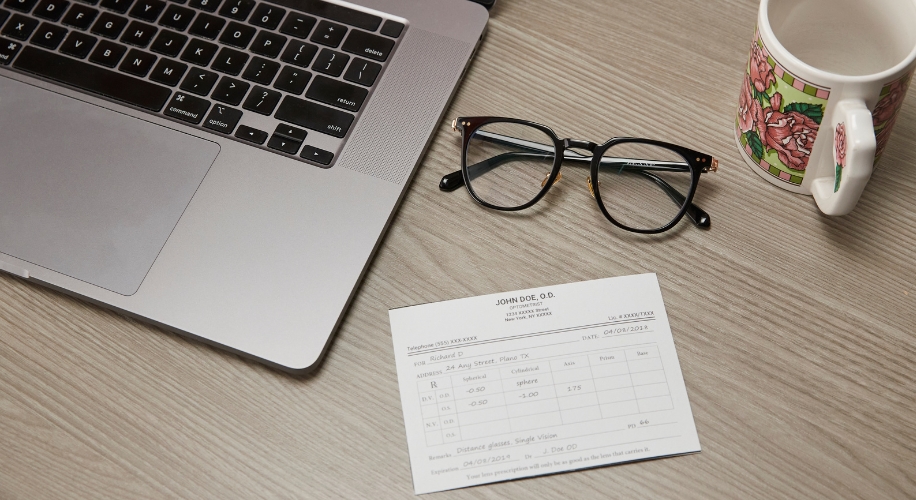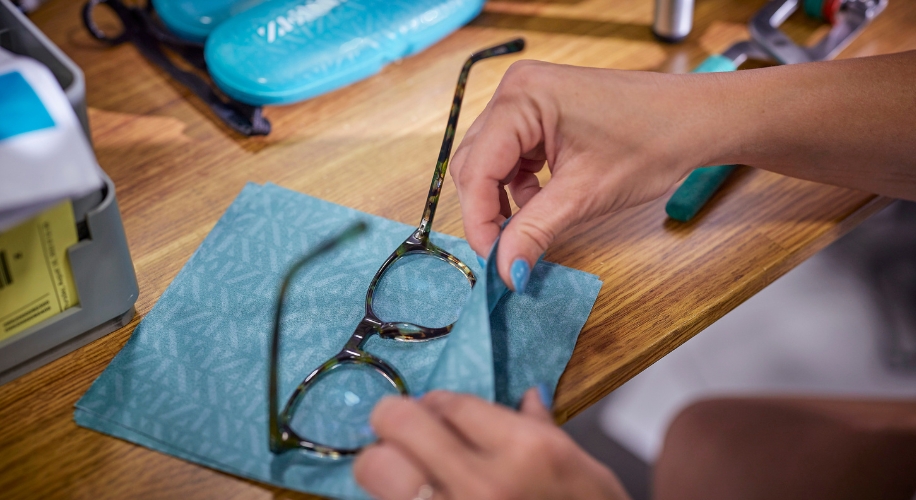Understanding Diopters
- BY Dr. Steven Liem
- IN Eye Health

What’s Inside!
- Diopter Measurement: A diopter is a unit that measures the optical power of a lens, indicating the level of vision correction needed for nearsightedness (negative value) or farsightedness (positive value).
- Prescription Interpretation: Understanding diopter values on your prescription helps you make informed decisions about your vision care, including whether you have myopia, hyperopia, or astigmatism.
- Lens Selection: Diopter values influence the thickness of lenses; higher values typically require thicker lenses, but advancements in materials can reduce thickness for comfort and style.
When it comes to eye health and vision correction, diopters are a fundamental unit of measurement that help us tailor eyewear to your unique needs. A diopter is a unit that measures the optical power of a lens, which focuses light to improve vision. Think of it as a way to quantify how much correction your eyes require to see clearly. If you’ve ever wondered about the numbers on your prescription, those are diopters, indicating the degree of nearsightedness or farsightedness.
Deciphering Your Prescription

The numbers on your eyeglass prescription represent diopters and give insight into the type of correction you need. For instance:
- A negative value indicates myopia, or nearsightedness, meaning you can see well up close but have difficulty seeing far away.
- A positive value suggests hyperopia, or farsightedness, the opposite condition where you see better at a distance than up close.
When you have astigmatism, you prescription can have even more numbers and seem more confusing. Understanding these values empowers you to make informed decisions about your vision care. If you’re looking for an online glasses prescription renewal, knowing how to interpret your diopter can help ensure you get the most accurate lenses for your needs.
How Diopters Affect Lens Choices

When selecting lenses, the diopter measurement helps determine how thick or thin your lenses should be. Here’s how it works:
- Higher diopter values typically mean a stronger prescription and potentially thicker lenses.
- Advanced lens materials and technologies can help to reduce lens thickness for higher prescriptions, enhancing comfort and aesthetics.
At Zenni Optical, we consider all aspects of your prescription to recommend the best lens options for your comfort and style. Our range includes high-index lenses that are thinner and lighter, even for high diopter values, ensuring that your glasses are both functional and fashionable.
Finding the Right Fit

Selecting the right glasses involves more than just understanding diopters; it encompasses the parts of eyeglass frames and how they complement your face. Here’s a brief overview:
- The bridge fits over your nose and is essential for ensuring your glasses sit comfortably and don’t slip.
- Temple arms extend over the ears to hold your glasses in place; their length affects the fit.
- The lens area holds the lenses and can vary in shape and size, impacting your vision and style.
Whether you’re in need of a new prescription or looking to refresh your style, understanding diopters is the first step to clearer vision. Armed with this knowledge, exploring online eye care options like vision tests and prescription renewals is easier and more efficient. Remember, a precise diopter measurement ensures you get the most out of your eyewear, and we at Zenni Optical are here to help every step of the way.

